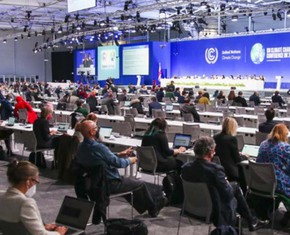The views expressed in our content reflect individual perspectives and do not represent the authoritative views of the Baha'i Faith.
Since the Baha’i Faith arrived in America in the last years of the 19th century, the Baha’i community has worked in the forefront of efforts to forge bonds of love and unity between the races.
Abdu’l-Baha, the son and successor of Baha’u’llah, the prophet and founder of the Baha’i Faith, addressed this issue constantly during his visit to North America in 1912, saying “… colors are of no importance. Colors are accidental in nature … Man is to be judged according to his intelligence and spirit. … That is the image of God.”
As the leader of the worldwide Baha’i community, Abdu’l-Baha saw the issue of race unity as central to the very viability of the United States as a country.
Baha’u’llah himself addressed a letter in 1873 to the American Republics, which I have argued in another article actually deals with the treatment of the recently freed slaves. How, though, does the Baha’i Faith respond to modern Critical Race Theory? Let’s explore.
RELATED: Melting Pot or Salad Bowl: Multi-Culturalism in America
My Spiritual Exploration of Critical Race Theory
Critical Race Theory (CRT) has become an important tool used by many academics to better understand how racism affects the structures of our society. However, it has recently become a target of ongoing culture wars and growing political divisiveness. Many parents and school districts worry how this subject might be taught to their children, and fear the impact it could have on them.
As a Baha’i and as a scientist, I’ve tried to educate myself on this topic, and I’d like to share what I’ve learned in this series of articles. Honestly, I found the process of learning about this topic very challenging. Much of what has been reported mischaracterizes and misunderstands Critical Race Theory, conflating it with different practices and philosophies. On some level, this is understandable, as Critical Race Theory itself is multifaceted and lacks rigid definitions.
Despite the occasional categorical pronouncement attempting to define Critical Race Theory by some of the leading exponents of the field, I learned in my research that it was originally conceived under a “fake it until you make it” ethos, according to Kimberlé Crenshaw, one of its founders. Also, terms such as “Critical Theory” are broadly used in many fields which analyze the phenomena of race and racism. Finally, a lot of terminology and academic language has developed in these areas of study, which requires some translation and context for anyone seeing it for the first time. All of this leaves a lot of room for confusion and misunderstanding.
Because of this confusion, I’ve tried to understand Critical Race Theory in light of the Baha’i teachings of unity and love, which represent the very axis and core principles of Baha’u’llah’s message.
The Origins of Critical Theory
The Frankfurt School – a 1930s-era group of academics, intellectuals, philosophers, and political dissidents dissatisfied with capitalism, fascism, and communism – initially developed Critical Theory to analyze the social factors that had stalled and prevented Marx’s predicted worker-led revolutions in industrialized societies. In the period between the two World Wars, all attempts at a Marxist revolution had failed in the industrialized West. Instead, fascism was becoming ascendant. Further, the supposedly successful Marxist revolutions had only occurred in the agrarian East, and themselves had quickly descended into totalitarianism.
The Frankfurt School sought to understand and explain this situation. They believed that something had gone very wrong in Western thought, including both traditional liberalism and Marxism, which were rooted in the rationalist philosophy of the Enlightenment.
The inception of the age of Enlightenment – beginning with the works of philosophers like Rousseau, Hume, and Locke, and culminating with works of Immanuel Kant near the close of the 18th century – entailed a pivot away from religion and tradition towards the use of pure rationality as the best means for arriving at truth. The Frankfurt School recognized that the project of the Enlightenment had given birth to both capitalist and communist systems, which had collectively wiped out tens of millions of lives in a few years and laid waste to much of the world. The Frankfurt School philosophers Max Horkheimer and Theodor W. Adorno expressed this sentiment in the opening paragraph of in their well-known work The Dialectic of Enlightenment:
Enlightenment, understood in the widest sense as the advance of thought, has always aimed at liberating human beings from fear and installing them as masters. Yet the wholly enlightened earth radiates under the sign of disaster triumphant.
If this was enlightenment, they reasoned, then it was an abject failure. In the aftermath of fascism and totalitarian communism, scholars recognized how the science of propaganda and media was deployed to manipulate the masses. For while science bestowed great powers on humanity, those same powers could be deployed against us, objectifying humans and turning them and all things sacred into commodities to be exploited.
To address the problem of propaganda and challenge entrenched cultural norms, the Frankfurt School developed Critical Theory. Its purpose was to critique what appeared to be the standard logical conclusions of contemporary sciences and in society more broadly, and to expose the hidden assumptions and implicit biases ensconced in language, traditions, and culture.
Critical Theory then spread to a wide variety of disciplines and competing philosophical schools of thought. These tools were also used by certain post-modernist philosophers to reject all universal values and even, for some, to question the conclusions of science and rationality itself. However, the Frankfurt School didn’t reject rationality or science; rather, it held that one must have tools to expose and understand the power and biases which inform their practice.
Unpacking Critical Race Theory
The development of contemporary Critical Race Theory happened first in the works of legal scholars such as Derrick Bell, Richard Delgado, and Kimberlé Crenshaw, among many others. In the mid-1970s, they each attempted to understand why progress on civil rights had stalled and many of the gains had even reversed.
These scholars realized that legal action could only address the most obvious sorts of overt racism, and that there still existed a very real and powerful societal force which tended to thwart progress. To them it appeared, contrary to the prevailing liberal narrative up to that point, that empathy and changing hearts alone were not enough to combat the scourge of racism. Instead, they viewed racial prejudice as endemic to American society, embedded in the very language and cultural narratives accepted in the nation’s population, in its history of enslavement, and in its founding documents.
To comprehend and diagnose this pattern of belief and action in American society and culture, these scholars turned to Critical Theory, which by that time had become an important analytical tool for academics in a diverse number of fields, such as anthropology, legal science, and political science.
As it developed, Critical Race Theory drew on a wide variety of previous scholarly work including cultural studies from the Birmingham School, post-colonialism, legal realism, race theory from Black, Latino, and Indigenous perspectives, and feminist theory, particularly second-wave. Its approach was inspired by the Frankfurt School philosophers, but also by this time also incorporated philosophical elements of American pragmatism.
RELATED: Why We Need a New Understanding of ‘Blackness’
A Baha’i Approach to Critical Theory
The disasters in western society which had inspired the Frankfurt School were foreshadowed about a century earlier in the ominous critiques of civilization given in writings of the prophet and founder of the Baha’i Faith, Baha’u’llah:
The civilization, so often vaunted by the learned exponents of arts and sciences, will, if allowed to overleap the bounds of moderation, bring great evil upon men. … If carried to excess, civilization will prove as prolific a source of evil as it had been of goodness when kept within the restraints of moderation. Meditate on this, O people, and be not of them that wander distraught in the wilderness of error. The day is approaching when its flame will devour the cities.
In response to these grave societal problems, Abdu’l-Baha called for the use of “Divine Philosophy” to address the ills of modern civilization. He warned in a talk given during his 1912 visit to North America that:
… divine philosophy — which has for its object the sublimation of human nature, spiritual advancement, heavenly guidance for the development of the human race, attainment to the breaths of the Holy Spirit and knowledge of the verities of God — has been outdistanced and neglected.
He predicted that this outdistancing would have dire consequences for humanity.
Abdu’l-Baha’s use of what he termed Divine Philosophy brought a critical eye to the thoughts and assumptions of humanity. He explained: “Old ideas and modes of thought are fast becoming obsolete. Ancient laws and archaic ethical systems will not meet the requirements of modern conditions.”
The Baha’i teachings overtly challenge the tragic consequences of institutionalized racism and sexism that permeate American culture. For example, in a withering attack on the assumptions and cultural norms which he saw at the root of the impending violence inherent in western civilization Abdu’l-Baha wrote:
… the breeding ground of all these tragedies is prejudice: prejudice of race and nation, of religion, of political opinion; and the root cause of prejudice is blind imitation of the past — imitation in religion, in racial attitudes, in national bias, in politics. So long as this aping of the past persisteth, just so long will the foundations of the social order be blown to the four winds, just so long will humanity be continually exposed to direst peril.
In the next article in this series, we will dive more deeply into the Frankfurt School’s Critical Theory and compare it to the deep social analysis offered by the Baha’i teachings.
















Comments
Sign in or create an account
Continue with Googleor